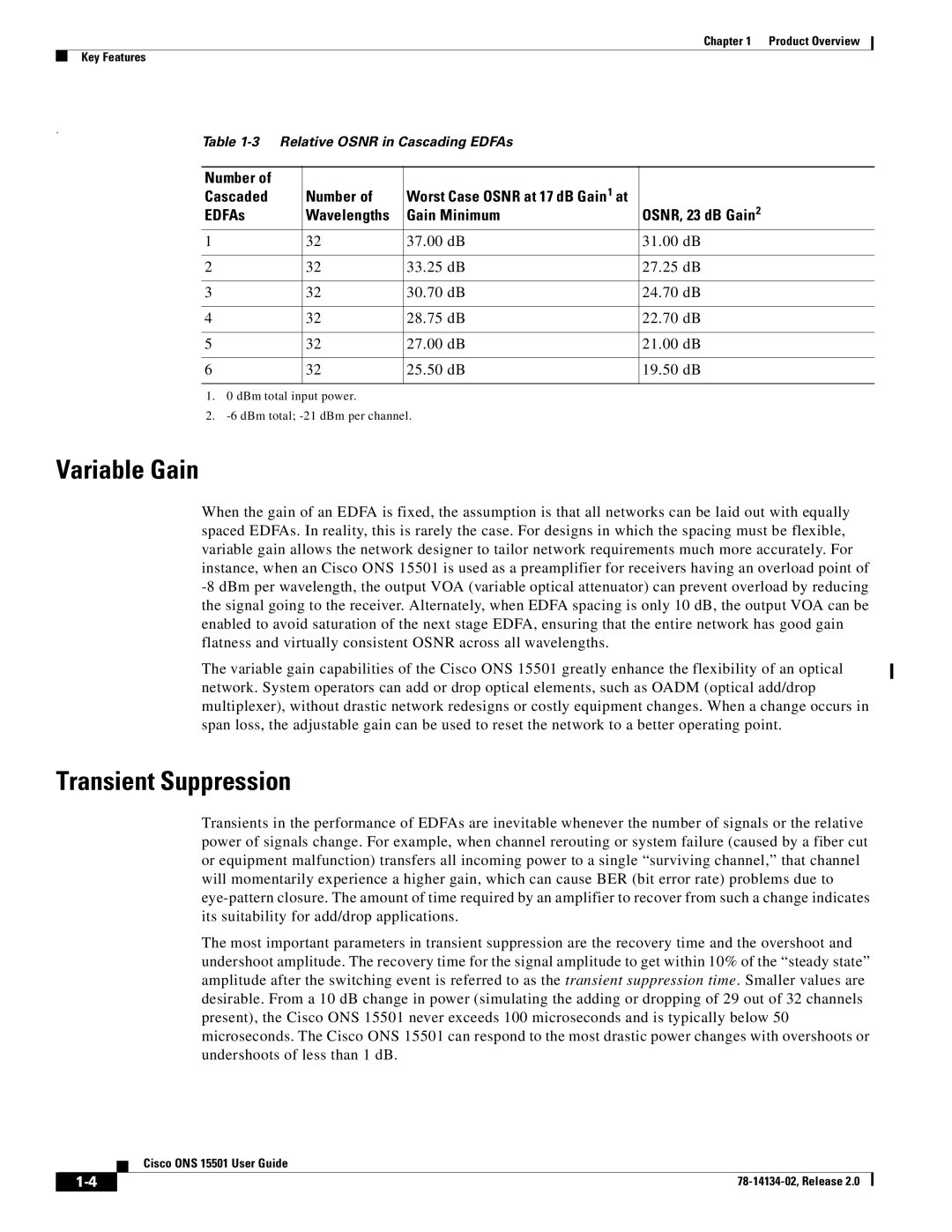
Chapter 1 Product Overview
Key Features
.
Table
Number of |
| Worst Case OSNR at 17 dB Gain1 at |
|
Cascaded | Number of | OSNR, 23 dB Gain2 | |
EDFAs | Wavelengths | Gain Minimum | |
1 | 32 | 37.00 dB | 31.00 dB |
|
|
|
|
2 | 32 | 33.25 dB | 27.25 dB |
|
|
|
|
3 | 32 | 30.70 dB | 24.70 dB |
|
|
|
|
4 | 32 | 28.75 dB | 22.70 dB |
|
|
|
|
5 | 32 | 27.00 dB | 21.00 dB |
|
|
|
|
6 | 32 | 25.50 dB | 19.50 dB |
|
|
|
|
1.0 dBm total input power.
2.
Variable Gain
When the gain of an EDFA is fixed, the assumption is that all networks can be laid out with equally spaced EDFAs. In reality, this is rarely the case. For designs in which the spacing must be flexible, variable gain allows the network designer to tailor network requirements much more accurately. For instance, when an Cisco ONS 15501 is used as a preamplifier for receivers having an overload point of
The variable gain capabilities of the Cisco ONS 15501 greatly enhance the flexibility of an optical network. System operators can add or drop optical elements, such as OADM (optical add/drop multiplexer), without drastic network redesigns or costly equipment changes. When a change occurs in span loss, the adjustable gain can be used to reset the network to a better operating point.
Transient Suppression
Transients in the performance of EDFAs are inevitable whenever the number of signals or the relative power of signals change. For example, when channel rerouting or system failure (caused by a fiber cut or equipment malfunction) transfers all incoming power to a single “surviving channel,” that channel will momentarily experience a higher gain, which can cause BER (bit error rate) problems due to
The most important parameters in transient suppression are the recovery time and the overshoot and undershoot amplitude. The recovery time for the signal amplitude to get within 10% of the “steady state” amplitude after the switching event is referred to as the transient suppression time. Smaller values are desirable. From a 10 dB change in power (simulating the adding or dropping of 29 out of 32 channels present), the Cisco ONS 15501 never exceeds 100 microseconds and is typically below 50 microseconds. The Cisco ONS 15501 can respond to the most drastic power changes with overshoots or undershoots of less than 1 dB.
| Cisco ONS 15501 User Guide |
